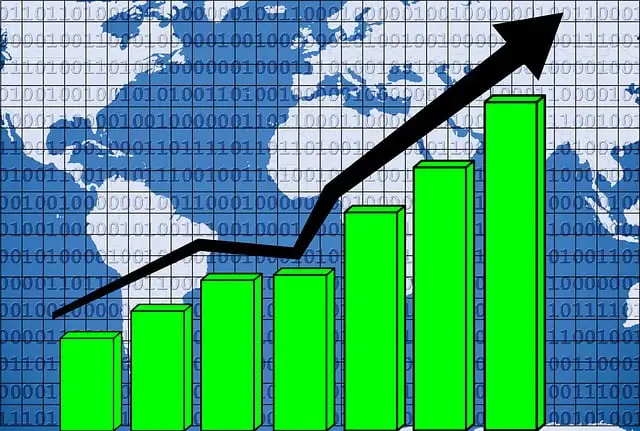The new US administration's policies, including increased tariffs and other strategic moves, have the potential to significantly impact Asian economies. It is crucial for these nations to bolster their resilience through regional cooperation and open trade practices.
What are the potential effects of the new US administration's policies on Asia-Pacific economies, and how should they adapt? To address these questions, the ADB has recently conducted two comprehensive studies, utilizing distinct global models—one emphasizing macroeconomics and the other focusing on trade—to gauge the possible effects.
The first study delves into the repercussions of the US adopting assertive policies, such as imposing 60% tariffs on the People’s Republic of China (PRC) and 10% tariffs on other nations, alongside reduced immigration and expansive fiscal policies.
The second study zeroes in on the impact of tariffs alone, hypothesizing a 60% tariff on Chinese imports and exploring various tariff scenarios for other countries, including 10% versus 20% tariffs, across-the-board tariffs versus exemptions for nations with free trade agreements with the US, and retaliatory tariffs versus no retaliation.
What insights can we glean from these analyses?
Firstly, the detrimental effects on China's economy from 60% tariffs are relatively limited. The macroeconomic model from the first study suggests that growth would slow by only 0.3% annually over the four-year term of the new administration. The trade model anticipates even lesser impacts due to the possibility of trade redirection and minimal effects on global output. If the US opts for the recently announced 10% additional tariffs, the impact would be even less severe, although further reviews of US trade imbalances could result in increased tariffs later in the year.
One reason for the muted impact of high US tariffs is the declining significance of US exports (both direct and indirect) on China's economy, which now accounts for merely 3% of the country's GDP.
Evidence from President Trump’s first term indicates that China was capable of redirecting exports to other countries, with the cost of US tariffs largely falling on US consumers and businesses.
Secondly, the impact on other Asian economies is expected to be mixed, with some potentially experiencing faster growth due to new export opportunities to the US, replacing goods previously exported from China.
Trade diversion opportunities, which benefited export-competitive economies like Viet Nam, were also evident during the initial US-China trade conflict.
The recent shift in foreign direct investment (FDI) from China to other Asian economies, particularly in Southeast Asia, in strategic sectors is likely to be intensified.
However, it would be incorrect to assume that US tariffs on China have zero-sum effects, hurting China and aiding other Asian economies. This is because the Chinese economy has become increasingly intertwined with regional economies through trade and investment, despite global geoeconomic fragmentation.
Consequently, slower Chinese growth can harm other economies by reducing the demand for imports, and reduced Chinese exports to the US can negatively affect economies supplying capital equipment and inputs to Chinese exporters, notably high-tech economies in East Asia, such as the Republic of Korea and Japan.
Moreover, if higher US tariffs on China encourage other Asian economies to attract more FDI and increase exports to the US, Chinese firms can still partake in these benefits by escalating their outbound FDI and exporting intermediate inputs to these economies. Such investment and trade patterns are already apparent, especially in Southeast Asia.
The trade study also reveals that economies with trade agreements with the US will benefit if they are exempt from US tariff hikes while their competitors without such agreements face tariffs. Most economies in the region lack such agreements and would thus be adversely affected by a differentiated policy.
Lastly, regional economies should exercise caution when considering retaliatory tariffs in response to higher US tariffs. Increased import tariffs can lead to higher import prices, contributing to inflation, making goods more expensive for domestic consumers, and raising production costs for businesses reliant on imported intermediate inputs.
Perhaps more significant for Asian economies than tariffs is the impact of the new administration’s policies on US inflation and interest rates.
All announced policies—to raise tariffs, reduce immigration, and extend or possibly increase tax cuts—are likely to be inflationary, leading to higher US interest rates for extended periods. These expectations are already reflected in the shift in the US bond yield structure since the US election. Despite progress by many Asian economies in reducing reliance on US-denominated debt, financial
Recent
See All2025-03-29
Beyond Growth: How AI Can Reshape Economies for Ecological Sustainability
2025-03-29
Robust Institutions Act as a Buffer for Emerging Economies Against US Monetary Policy Shifts
2025-03-29
Redefining Progress: AI's Role in Fostering Ecological Economies
2025-03-29
Five Strategic Steps to Unlock Armenia’s Data Center Potential for Economic Growth
2025-03-29
ASEAN Nations Must Capitalize on Trade, Digital Advancements, and Connectivity
2025-03-29
Strengthening Economic Resilience in ASEAN through Trade, Tourism, and Digitalization
2025-03-29
Strong Institutions Shield Emerging Markets from US Monetary Shocks
2025-03-29
Why Enhancing Natural Capital is Key for Green Growth
2025-03-29
Enhancing Debt Resilience in Emerging Economies
2025-03-29
The Influence of Political Stability on Fiscal Space Amidst Climate Risks
Newsletter
Get life tips delivered directly to your inbox!












